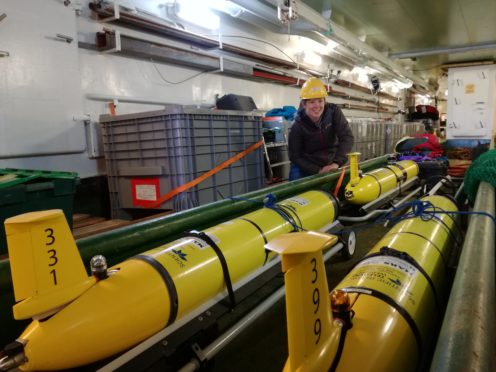Scientists based at Oban have discovered previously hidden “patches” of water between the Arctic and Atlantic oceans using marine robots.
The work by experts at the Scottish Association for Marine Science (Sams) could dramatically alter our understanding of how the ocean’s food chain works.
Created in the northern part of the Barents Sea, as cooler and fresher water from the Arctic moves south and becomes trapped within the warmer and saltier water from the Atlantic, these eddies – circular movements of water that have broken off from an ocean current – measure roughly 18.6 miles across.
Despite their size, the eddies are invisible to satellites and had gone unnoticed until oceanographers from Sams, in Oban, picked up some unusual readings during a trial mission of an underwater glider.
The glider moves across the ocean to depths of 650ft collecting data, including heat and salinity every kilometre. This allowed the Sams team to measure one of these eddies in detail.
While this particular eddy’s surface temperature was similar to the surrounding water, masking it from satellites, its lower salt content made it stand out in the glider readings.
Dr Marie Porter, a Sams oceanographer and lead author on a report about the discovery, published in Geophysical Research Letters, said her findings had implications for understanding the distribution of nutrients that fuel the entire Arctic ecosystem.
She said: “We get a pretty good idea about what’s happening on the very surface of our ocean through satellites but eddies like this one have been hidden from view because they have warmed at the surface since leaving the Arctic.
“This temperature masking means we have previously underestimated how much water moves within these patches in the Arctic Seas. It begs the question: how many more of these hidden eddies are occurring in the ocean today?”










